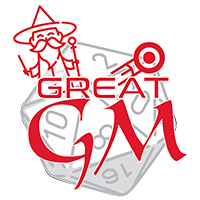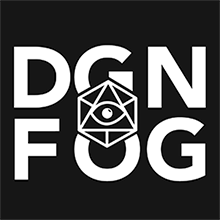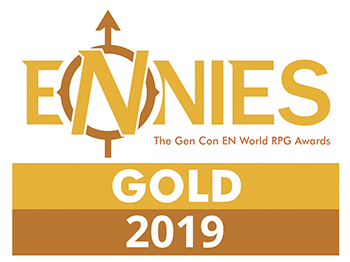Warforged
For most of the thirty years they served in the Last War, warforged soldiers formed their own units, serving under human commanders. Their training was carried out in camps run by House Cannith, so their tactics and organization were fairly consistent, regardless of the nation they served. Of course, once the warforged were purchased and deployed, they often received additional training and developed distinct tactics of their own.
Even the rawest warforged deployed in battle is a trained fighter rather than a mere warrior, which helped to justify the expense of a construct soldier.
Even the rawest warforged deployed in battle is a trained fighter rather than a mere warrior, which helped to justify the expense of a construct soldier.
Basic Information
Anatomy
Warforged are made from wood and metal, but they can feel pain and emotion
Warforged are formed from a blend of organic and inorganic materials. Root-like cords infused with alchemical fluids serve as their muscles, wrapped around a framework of steel, darkwood, or stone. Armored plates form a protective outer shell and reinforce joints. Warforged share a common facial design, with a hinged jaw and crystal eyes embedded beneath a reinforced brow ridge. Beyond these common elements of warforged design, the precise materials and build of a warforged vary based on the purpose for which it was designed.
Although they were manufactured, warforged are living humanoids. Resting, healing magic, and the Medicine skill all provide the same benefits to warforged that they do to other humanoids.
Warforged are formed from a blend of organic and inorganic materials. Root-like cords infused with alchemical fluids serve as their muscles, wrapped around a framework of steel, darkwood, or stone. Armored plates form a protective outer shell and reinforce joints. Warforged share a common facial design, with a hinged jaw and crystal eyes embedded beneath a reinforced brow ridge. Beyond these common elements of warforged design, the precise materials and build of a warforged vary based on the purpose for which it was designed.
Although they were manufactured, warforged are living humanoids. Resting, healing magic, and the Medicine skill all provide the same benefits to warforged that they do to other humanoids.
Genetics and Reproduction
Warforged cannot reproduce naturally, and none have been created since the signing of the Treaty of Thronehold two years ago.
Dietary Needs and Habits
Warforged do not need to eat or drink to survive.
Biological Cycle
Warforged do not need to sleep to survive. Instead, they go into a low-power mode during rests which allows them to keep watch while recovering.
Civilization and Culture
Naming Traditions
Most warforged were assigned numerical designations for use in military service. Many of them adopted nicknames, often given to them by their comrades. As independent individuals, some have chosen new names as a way to express their path in life. A few take on human names, often the name of a fallen friend or mentor.
Warforged Names: Anchor, Banner, Bastion, Blade, Blue, Bow, Cart, Church, Crunch, Crystal, Dagger, Dent, Five, Glaive, Hammer, Iron, Lucky, Mace, Oak, Onyx, Pants, Pierce, Red, Rod, Rusty, Scout, Seven, Shield, Slash, Smith, Spike, Temple, Vault, Wall
Gender Ideals
The typical warforged has a sexless body shape. Some warforged ignore the concept of gender entirely, while others adopt a gender identity.
Major Language Groups and Dialects
All Warforged were programmed with knowledge of the Common language with at least one additional proficiency.
Common Customs, Traditions and Rituals
The warforged were built to serve and to fight. For most of their existence, warforged had a clearly defined function and were encouraged to focus purely on that role. The Treaty of Thronehold gave them freedom, but many still struggle both to find a place in the post-war world and to relate to the creatures who created them. The typical warforged shows little emotion. Many warforged embrace a concrete purpose-such as protecting allies, completing a contract, or exploring a land-and embrace this task as they once did war. However, there are warforged who delight in exploring their feelings, their freedom, and their relationships with others.
The more a warforged develops its individuality, the more likely it is to modify its body, seeking out an artificer to customize the look of its face, limbs, and plating.
The more a warforged develops its individuality, the more likely it is to modify its body, seeking out an artificer to customize the look of its face, limbs, and plating.
History
Warforged were built, bought, and trained for war, and it was natural that the people who invested so much time and money should feel a strong sense of ownership over the living constructs. The fact that warforged evolved slowly from the mindless constructs built before the war to the sentient race they are today also helps to explain why they were treated as property, little different from armor or weapons issued to soldiers or the siege engines those soldiers employed. Few people have trouble with the idea of a warforged titan being the property of the country that paid for its construction, but when the subject is a construct that seems human—that walks, talks, thinks, and apparently feels much like a person—the question of ownership becomes a sticky moral issue.
Common Myths and Legends
Most warforged have no interest in religion, but some embrace faith and mysticism, seeking higher purpose and deeper meaning.
Origin/Ancestry
Created by House Cannith
Lifespan
Unknown
Average Height
Depends on the model: some are sleek and small while others are large and bruising.
Geographic Distribution
"The soul is what matters, not the shape of the vessel." "What makes you think he has a soul?" Gerrion said.
"What makes you think you do?"
Remove these ads. Join the Worldbuilders Guild









Comments